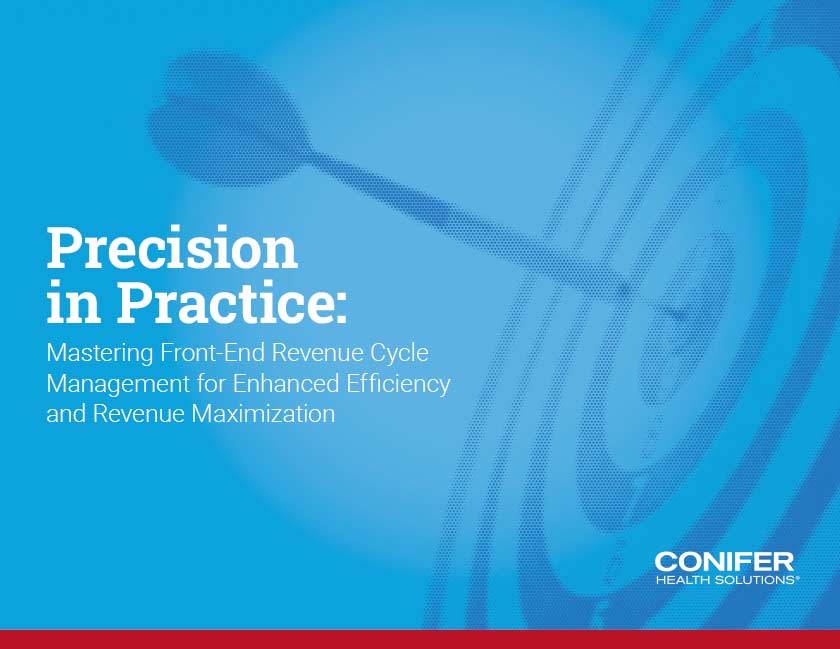CHAPTER 1
Scheduling – Putting Your Best Foot Forward
CHAPTER 1
Scheduling – Putting Your Best Foot Forward
Now that patients are responsible for a larger portion of their healthcare costs, they’re demanding better service at every encounter, and the first encounter is typically scheduling. However, scheduling is a highly manual, time-consuming process that can often make the entire experience feel rushed and impersonal—not the ideal way to engage with patients.
Patients have high expectations when it comes to service, and scheduling an appointment is no exception.
Scheduling Complexities
- Different types of services with different scheduling requirements
- Scheduling for multiple services
- Sequential scheduling requirements
- Inconsistencies in scheduling workflows between different types of providers
- Emergency and unexpected events that interrupt the schedule
Scheduling discrepancies like overbooking, double-booking, and data entry errors cause more work for schedulers and front-desk staff, frustrate providers, and negatively impact the patient experience.
The High Cost of No-Shows
When patients miss an appointment, it not only frustrates the provider but can also frustrate the patient, especially when the patient has waited months to get the appointment—something that is all too common in today’s healthcare environment. Patients miss appointments for many reasons, from costs to fear to last-minute scheduling conflicts. But, often, they miss the appointment because they simply forgot.
Lost
revenue
Expensive
equipment sits idle
Inefficient use of
staff and space
Discontinuity
of care
Delayed
care
Increased
use of ER
Longer wait times
for appointments
Decreased patient
satisfaction
A Better Approach to Scheduling
No-show rates range from 5% to more than 30%, depending on the specialty, and can cost up to $350 per unfilled visit.2
Two of the most impactful steps providers can take to improve scheduling are implementing automation technology and giving patients more options for easier scheduling. The best scheduling automation solutions offer more streamlined scheduling workflows as well as reminders and confirmations. In addition to reducing no-shows, reminders and confirmations provide an excellent opportunity for providers to include a link to online check-in and an option to pay in advance. They also allow providers to remind patients what to bring to their appointments, like insurance cards and a list of their medications.
Research shows that online scheduling can reduce no-shows by 17%.3
Making it easier for patients to schedule appointments is vital to the patient experience. To do so means giving them multiple options like online self-scheduling via a portal or app, in addition to the traditional phone scheduling.
80%
of consumers say they would choose a provider who offers online scheduling over one who does not.4
35%
of consumers say online scheduling is a “major deciding factor” when determining between competing providers.5
By integrating automation and providing multiple scheduling options, including online self-service portals and apps, providers can significantly enhance patient satisfaction and reduce the incidence of no-shows. This not only leads to more efficient use of resources but also contributes to a more streamlined and positive healthcare experience for patients.

eBook: Precision in Practice
Mastering Front-End Revenue Cycle Management for Enhanced Efficiency and Revenue Maximization
Discover the blueprint for transforming front-end revenue cycle management in this comprehensive eBook. Gain insights into simplifying scheduling, mastering prior authorizations, overhauling registration, and optimizing eligibility & enrollment processes to drive financial health and elevate patient experiences. This guide is essential for healthcare leaders seeking to maximize efficiency, enhance patient satisfaction, and bolster their organization’s bottom line.
References
- https://www.ncbi.nlm.nih.gov/pmc/articles/PMC7280239/
- https://www.solutionreach.com/blog/which-wins-the-national-average-no-show-rate-or-yours-1
- https://financesonline.com/appointment-scheduling-software-statistics/
- https://www.healthleadersmedia.com/innovation/assessing-online-scheduling-emerging-trend-scheduling-physician-appointments
- https://www.healthleadersmedia.com/innovation/assessing-online-scheduling-emerging-trend-scheduling-physician-appointments